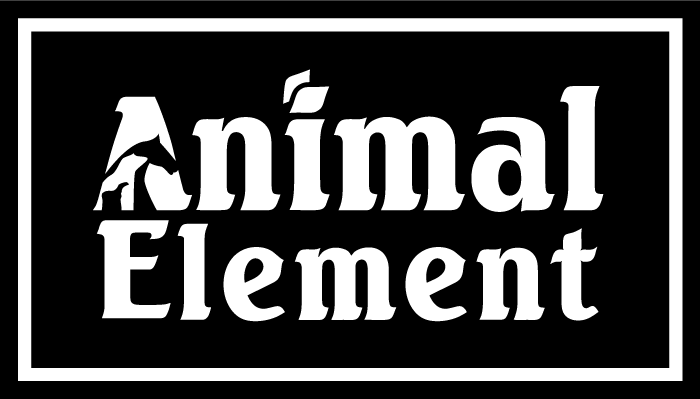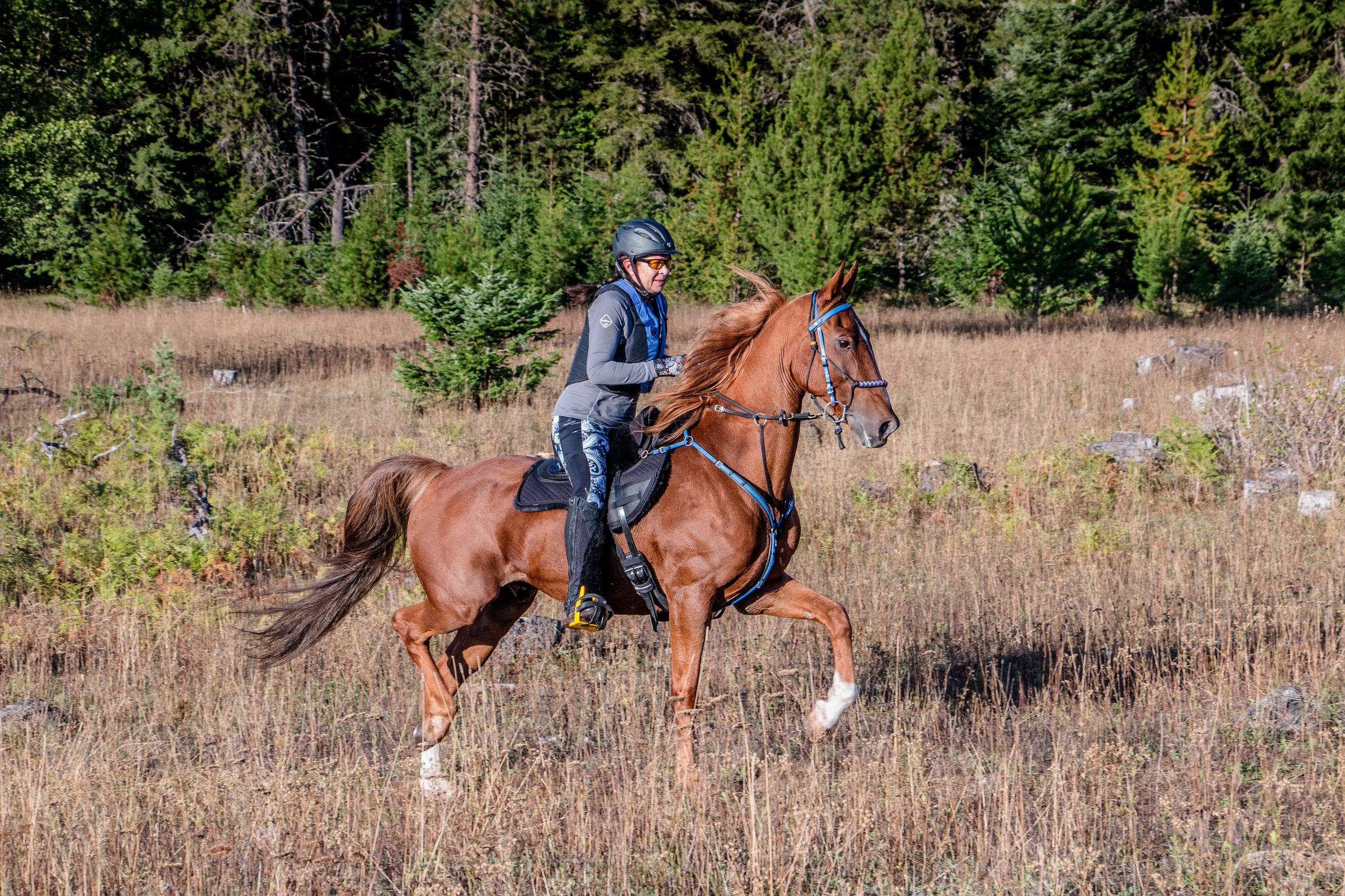Last updated on October 8, 2024
3 Simple Core Exercises for Horses That May Improve Your Horse’s Performance
When you read the term “core exercises for horses” did you immediately get a picture of a cartoon horse with a 6-pack sweating it out in the gym? Did you jokingly or (seriously) think something like: “Wait… core strength for my horse? Since when does my horse need abs? Does a horse even HAVE a “core”?
And while it IS fun to joke about a horse in the gym and picture your favorite cartoon horse hitting the weights, the fact of the matter is, horses DO have a core. And although it’s obviously different than human core muscles, horses need a strong core to perform their best AND avoid injury, just like us.
We sat down with nurse, barrel racer, and health enthusiast Jessica Wharton to discuss how core exercises for horses can improve performances and prevent injuries. She even gave us a few examples of how she strengthens her barrel horse, Gator’s, core during training.

Core Exercises for Horses Target These Muscles
Ok, first we have to discuss what the “core” is in equine anatomy. In short, the core muscles support and stabilize the back and pelvis. It’s made up of 3 fairly large muscle groups: the abdominal muscles, the sub-lumbar muscles, and the epaxial muscles. Each of these muscle groups breaks down into several individual groups and controls different parts of the horse’s body. Ready for a brief anatomy lesson? Let’s go!

Abdominal Muscle Group:
- Rectus abdominis
- Transversus abdominis
- Internal obliques
- External obliques
This muscle group supports the abdomen and aids in breathing, giving birth, and pooping. All fairly important bodily functions, wouldn’t you say? These muscles also help support the topline and tuck in to help jump and perform dressage movements.
Sub-Lumbar Muscle Group:
- Iliacus
- Psoas Major
- Psoas Minor
These muscles connect the back and the pelvis. They are responsible for moving the hind limbs and pelvis, and rotating the hips, and are located deeper in the core. Key muscles for rodeo events like barrel racing, roping, and pole bending where a strong, explosive backend is necessary.
Epaxial Muscle Group:
- Multifidus
- Cervics longissimus
- Dorsi longissimus
- Iliocostalis
This muscle group is located along the spine and is solely focused on the movement and stabilization of the back and neck.
Core Exercises for Horses to Help Strengthen Muscles
Clearly, a strong core is important for your performance horse, and even your non-performance horse. Strong, stable abdominal and back muscles help prevent injuries and improve quality of life. So how do you focus on those muscle groups during training? Jessica shares with us a few of her favorite ways to strengthen her horse’s core muscles.
1. Use Equibands
These are essentially resistance bands that wrap around the horse’s rear end and under the belly. Not only do these bands make the horse engage their core, but they also work the glutes and stifles. By making the horse engage all four legs, Equibands help keep their feet under them and keeps the horse upright through turns. Jessica uses them when walking or trotting her horse, and it just adds a level of strength training to conditioning. You can check out the Equibands website here.

2. Do Hill Climbs
Riding your horse up and down hills engages different muscles than riding along flat ground. This helps engage and strengthen the core and hind-end muscles. Training on a moderate slope (rising 8-10 vertical feet over a 100-foot distance) improves cardiovascular function, increases fatigue resistance, and improves locomotion function. Jessica adds 1 or 2 days of hill climbs a week to her training schedule.
3. Incorporate Pole Work
Regardless of the event you compete in, adding pole work to your training can be beneficial core exercises for horses. Jessica uses both ground poles and the raised Cavaletti poles, to encourage Gator to pay attention to where his feet are at all times. This engages the core muscles and increases the range of motion for both the front and hind legs. Pole work is also great for balance and stability.
Core Exercises for Horses Don’t Have to Be Complicated

While a strong core is important for your horse’s health and performance, adding core exercises to your training program doesn’t have to be complicated. Aside from being a mom, barrel racer, and involved member of her church, Jessica is also a full-time registered nurse, so she doesn’t get on her horse 7 days a week. She shoots for 3-4 days of riding and tries to stay out of the arena as much as possible to keep it interesting. She does 1 or 2 days of hill climbs, 1 day of pole work, and usually only 1 day of intense drills in the arena. To read Jessica and Gator’s story, check out their blog feature here!
Incorporating Equibands into your normal groundwork is a great way to get your horse’s core engaged and strengthened. Hill climbs and pole work improves core stability and proprioception, as well as engages the stifle and hind end muscles.
A horse with a strong core has a lower chance of injury, better respiratory function, increased awareness of their body, and better, more explosive performance. Remember, the “core” is more than just the abdominal muscles. It also includes the back and psoas muscles that provide spine and neck stability, and mobility of the hips and back legs. All horses can benefit from a strong core, regardless of their age or competition event.
Gut Health and Core Strength Are Both Crucial for Optimum Performance

Often, if a horse has a poor topline, it can be blamed on improper training or poor muscle movement patterns leading to a weak core. However, all the top-line and core strengthening exercises in the world cannot compensate for the lack of nutrient absorption.
By adding Foundation Daily Detox and NuTrack Digestive Support to your feed program, your horse will better use the nutrients in their food, thus improving gut health and muscle mass. A healthy digestive system is the foundation of a healthy horse. To get them to their peak physical and mental condition, you first must start internally at the gut. FDD flushes the system of all toxins built up and gets the organs functioning properly again, while NuTrack improves nutrient absorption and intestine function.
To read more about how these two supplements work together to improve your horse’s overall health, check out these two blogs: How FDD & NuTrack Can Help With Healthy Horse Hooves and Horse Behavior and Gut Health: What You Need to Know.
Have questions about how FDD & NuTrack can help improve your horse’s core? Get in contact with Mark Kaylor at 509-301-1798. He is happy to answer any questions you have or address any concerns!
Content is intended for informational purposes only. Proudly written for Animal Element by the team at FaithHanan.com.
Resources:
- Ballou, Jec A. “How to Use Hills for Horse Training.” Horse Journals. 23 May 2024. https://www.horsejournals.com/how/how-use-hills-horse-training
- Bateman, Stephanie. “Learn How to Strengthen Your Horse at Home Using Polework.” Horse & Hound UK. 13 Jan. 2024. https://www.horseandhound.co.uk/features/horse-core-polework-exercises-643092
- Fitzgerald, Pollyanna. “Part One: Core Muscles of the Horse.” Lightspeed Sports Recovery. 13 Jan. 2021 https://lightspeedsportsrecovery.co.uk/2021/01/13/core-muscles-of-the-horse/

